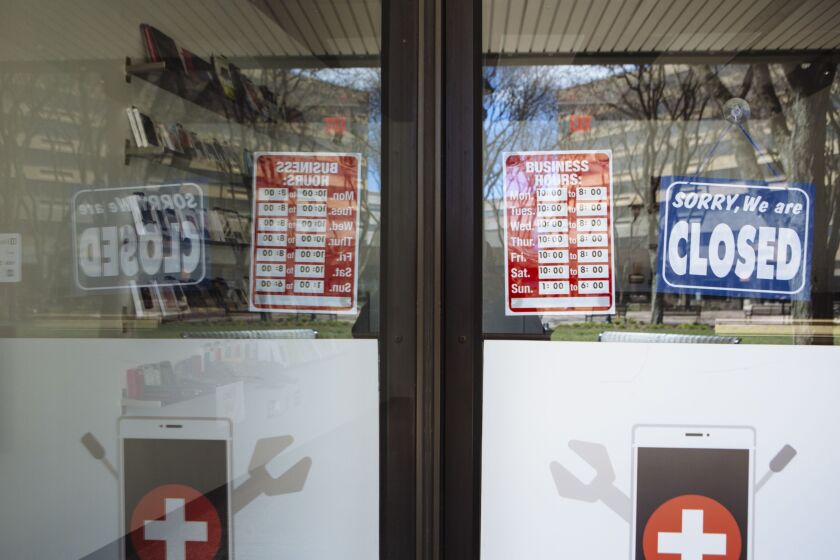The U.S. Small Business Administration plans to reopen the Paycheck Protection Program to small lenders on Friday and to all lenders next Tuesday.
The SBA and the Treasury Department said Wednesday that PPP-eligible lenders with $1 billion or less in assets for “first draw” and “second draw” applications will be able to offer loans through the PPP portal on Jan. 15 starting at 9 am ET. First draw applications are for businesses that didn’t borrow from the PPP last year, while second draw applications are for small businesses who need to borrow again. The portal will fully open on Jan. 19 to all participating PPP lenders to submit first and second draw loan applications to the SBA.
Richard Bernstein, MBA, is a former IRS R&D engineer who counseled IRS engineering managers for over 17 years on how to think about high-risk R&D tax credits dealing with software. Having retired in 2004, he now is helping businesses compile and archive their substantiation in preparation for submitting their Form 6765, business component and Part G data. Reach him at richb201@gmail.com.
Elyse Schupak is a policy advocate at Public Citizen.
Accounting firms will be able to help their clients with gaining access to the loans after they got experience last year with the program.

“We spent the entire Christmas break getting ramped up for this and looking at our processes internally,” said Frank Balestreri, audit partner at Sensiba San Filippo. “The first time we did this, you had to fly by the seat of your pants because everything was changing almost on a daily basis. Now we understand the process a little bit better and what documents are going to be required, and the third-party payroll providers have really stepped up their game to get reports that are going to be useful in these situations.”
Earlier this week, the SBA first gave dedicated PPP access to community banks, including community development financial institutions, minority depository institutions, certified development companies, and microloan intermediaries as part of its efforts to reach underserved and minority small businesses after complaints that many minority businesses couldn’t secure PPP loans last year.
On Friday, the SBA plans to continue its emphasis on reaching smaller lenders and businesses by opening to approximately 5,000 more lenders, including community banks, credit unions, and farm credit institutions. The SBA also intends to provide dedicated service hours for smaller lenders after the portal fully re-opens next week.
“A second round of PPP could not have come at a better time, and the SBA is making every effort to ensure small businesses have the emergency financial support they need to continuing weathering this time of uncertainty,” said SBA Administrator Jovita Carranza in a statement Wednesday. “SBA has worked expeditiously to ensure our policies and systems are re-launched so that this vital small business aid helps communities hardest hit by the pandemic. I strongly encourage America’s entrepreneurs needing financial assistance to apply for a first or second draw PPP loan.”
First draw PPP loans are for borrowers who haven’t received a PPP loan before Aug. 8, 2020. The first round of the PPP, which ran from March to August of last year, enabled 5.2 million small businesses to keep 51 million workers employed.
Second draw PPP loans are aimed at eligible small businesses with 300 employees or less, that previously received a first draw PPP Loan and will use or have used the full amount only for
authorized uses, and that can demonstrate at least a 25 percent reduction in gross receipts between comparable quarters in 2019 and 2020. The maximum amount of a second draw PPP loan is $2 million.
“We are pleased to have opened PPP loans to CDFIs, MDIs, CDCs, and Microloan Intermediaries. The PPP is already providing America’s small businesses hardest hit by the pandemic with vital economic relief,” said Treasury Secretary Steven Mnuchin in a statement. “As the program re-opens for all first and second draw borrowers next week, the PPP will allow small businesses to keep workers on payroll and connected to their health insurance.”
Updated PPP forms, guidance and resources can be found on the SBA website.
Balestreri believes his firm has learned from its experiences last year with the program, but he also has some advice for other firms helping their clients this year. “I think we’re going to be in a much better position, but the most challenging cases are the ones where companies do payroll internally, and you’ve got to try and pull all this together so that it makes sense because there are limitations like the $100,000 limitation on annual salary,” he said. “Even if you have payroll, you have to be able to limit that and come up with the correct calculations. That’s where companies get confused, understanding all the rules, what you can include, what’s excluded, what are the limitations. That’s where the CPA firms can really step in and prepare a package for them that they can then turn over to their lender.”
He has been walking clients through the process as they try to navigate their lenders’ online portals. “The other area where I’ve seen companies struggle a lot is with the online portals that the banks have set up,” said Balestreri. “They get confused when they go through, and for those of us who have seen this over and over, what I can tell you is that almost every bank that I have dealt with has a little bit of a different process. That in and of itself makes it difficult to consult with clients because you don’t know exactly what each bank is going to do. Typically what we do is we’ll get on a Zoom call with a client, have them log in, and then walk them through the process, and white glove it all the way through. That really helps relieve the anxiety of the whole process and makes them feel much better about what they’re doing.”



